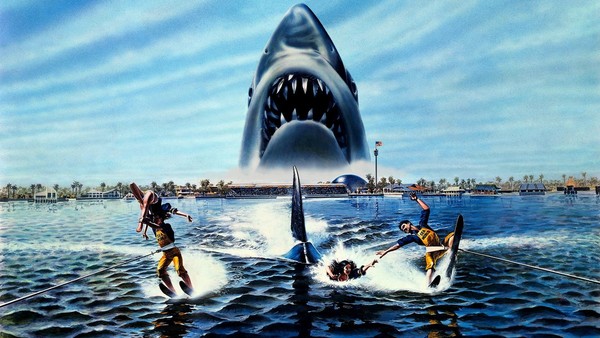20 Things You Didn't Know About Jaws 3D
Everything you didn't know about one of the worst movies ever made.

On Saturday, July 1, 1916, Charles Vansandt was vacationing at Beach Haven, a Long Island resort community. Before dinner, he decided to take a quick dip into the Atlantic Ocean. Within minutes, he was screaming, dragged out of the water by lifeguards. His left leg was stripped to of flesh as though it had been dipped into a bucket of piranha.
Despite sightings of several different sharks near the shoreline, the beach remained open. Over the next 12 days, five more attacks occurred, from Long Beach to Matewan. There is some debate about what species of shark it was, it is largely believed to have been a Bull shark, given their brutal nature.
That was the first Summer of the Shark - a tagline that occasionally graces overblown headlines during dry summer news, the last being the August 2001 edition of Time Magazine. Then September came and the world stopped looking down in fear, but up.
It also served as the basis for Peter Benchley's Jaws, which in turn was made into what many consider the first blockbuster movie in cinematic history. Killer shark movies have been relegated to direct-to-DVD shlock. However, just a few decades earlier, they were franchise-bait.
Steven Spielberg described sequels as “a cheap carny trick.” They weren't just carny tricks, but embarrassments, each worse than the last. But Jaws 3D a special kind of awful. One born of booze, bad ideas, cocaine and the ongoing desire to milk a franchise for all it's worth.
20. Budget: $18 Million

If you've ever heard Richard Dreyfuss talk about his experience on Jaws, he'll likely tell the same story he always does. Around the beach, loudspeakers would regularly repeat the words: "The shark is not working."
Other aquatic films were always shot on controlled sets, but Spielberg wanted to go bold and shoot in the open water. What he didn't account for was what saltwater would do to the machinery inside the mechanical shark, or the other on-set disasters that occurred, including one of the boats nearly sinking, forcing crew to throw shot film onto another vessel.
Ultimately, he used it to his advantage, shooting from the shark's POV and essentially creating the idea of not showing the monster until the last act.
He did that on a budget of only $8 million dollars, and the inexperienced director made the most of it. Joe Alves had ten million more than Spielberg, a controlled set, a bigger shark and somehow everything looks much worse. Proof positive that money doesn't make the movie - the crew does or, if you ascribe to the autuer theory, at least the director.